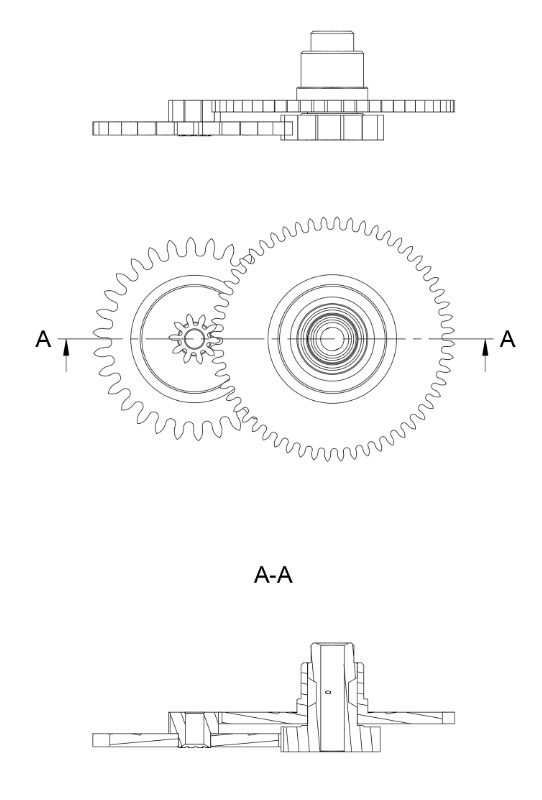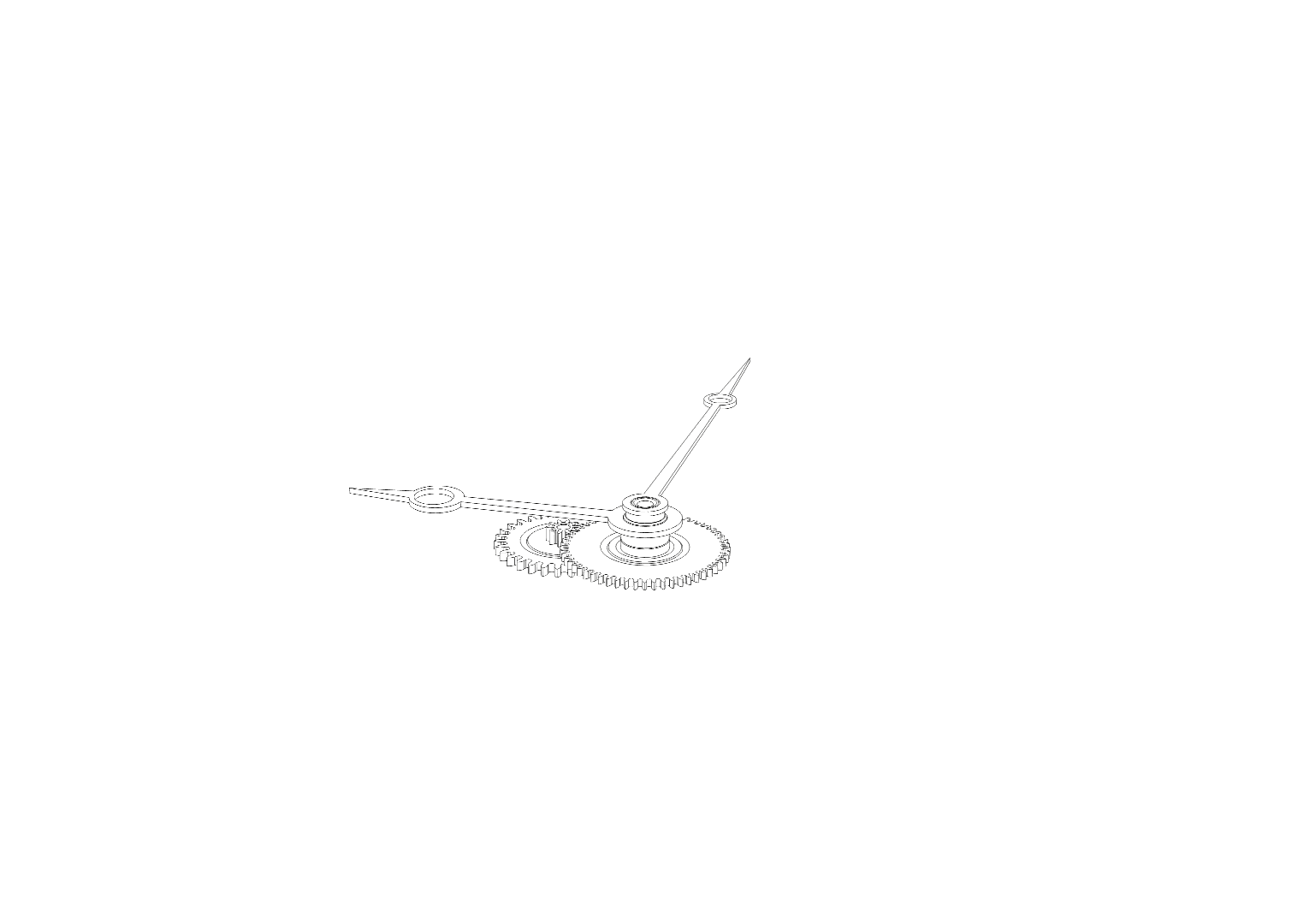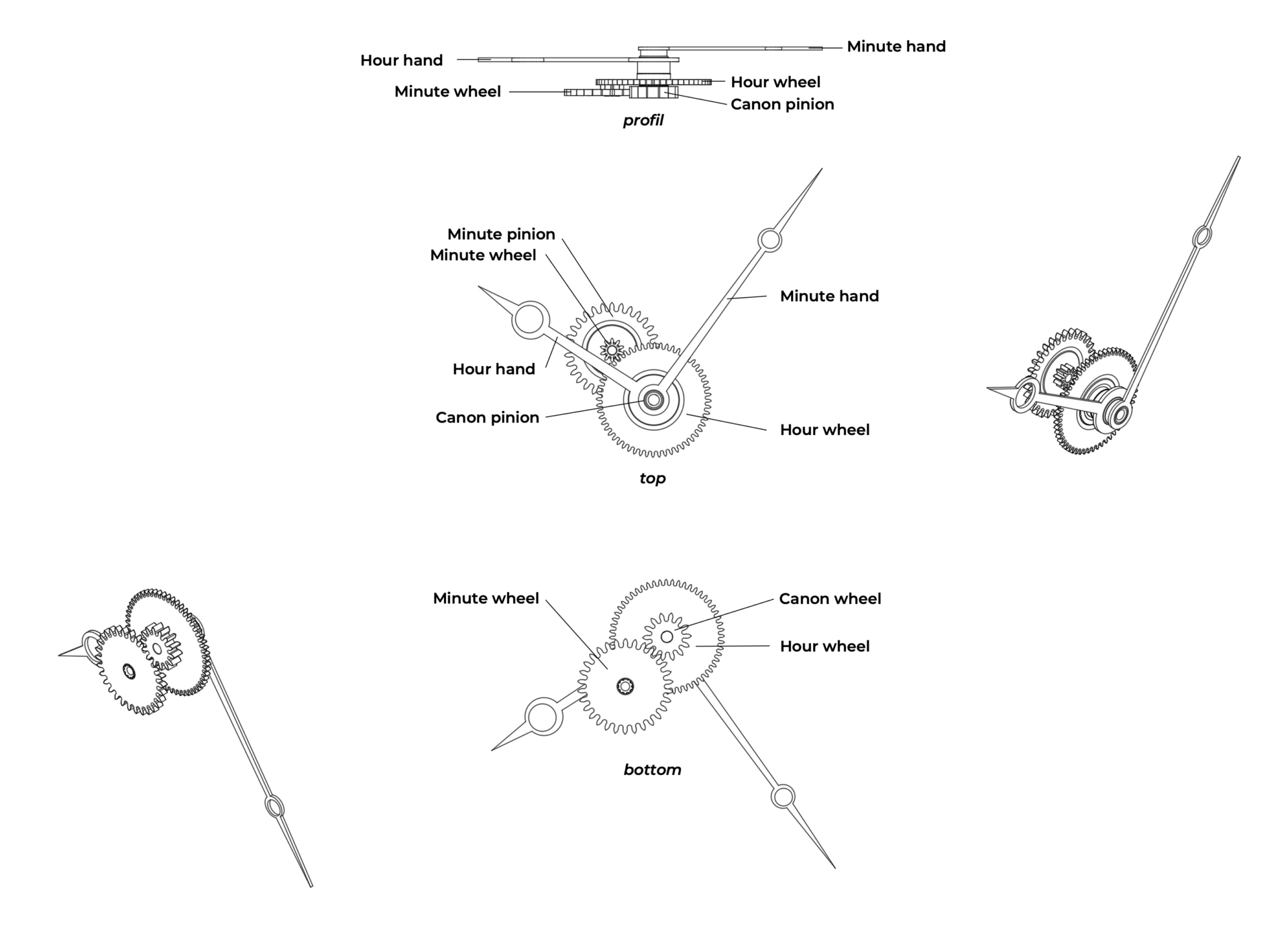MOTION WORK
Figure 1: Exploded view and kinematic (accelerated) of the motion work
Figure 2: Plan of a motion work (with hands)
Its role is to distribute the information of hours and minutes to their respective hands and allow their correction by the time-setting mechanism.
A motion work consist of:

Figure 3: Plan of a motion work
The canon pinion is driven by the upper pivot of the centre wheel, which completes one revolution in an hour. The canon pinion directly carries the minute hand and as well completes one revolution in an hour. The teeth of the canon pinion mesh with the teeth of the minute wheel plate, to which the minute pinion is attached. The minute pinion meshes with the teeth of the hour wheel, which is superimposed on the canon pinion and carries the hour hand. The gear ratio of the minute wheel is calculated so that the hour wheel turns 12 times more slowly than the canon pinion, completing one revolution in 12 hours. It is, therefore, a reduction-train.
During the time-setting process, the time-setting train drives the minute wheel. The friction between the canon pinion and the upper pivot of the centre wheel allows the rotation of the entire assembly of canon pinion-minute wheel-hour wheel independently of the rest of the movement.
Until the 17th century, most clocks and watches only had an hour hand. The relative precision of clocks and watches and the technical knowledge of the time justified the absence of a minute hand. The first minute hands were displayed separately on a counter distinct from the hour hand. In the mid-17th century, the English clockmaker Daniel Quare invented a mechanism capable of displaying hours and minutes at the centre of the dial, on the same axis, by overlapping the wheels carrying and driving the two hands. Motion work was born, and no significant advancements have since been seen.


